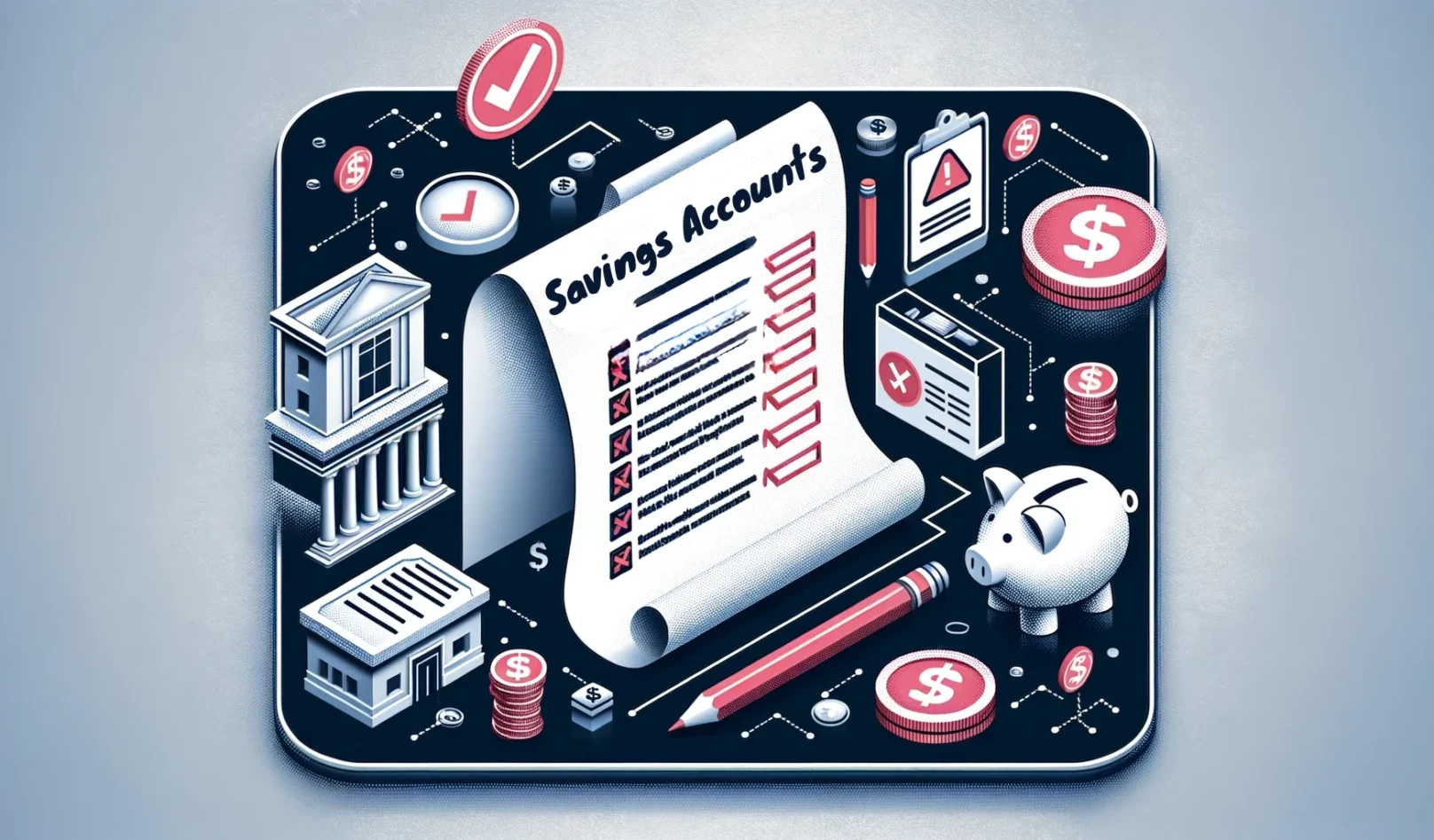
Savings accounts provide accessible liquidity, earning modest interest − but assumptions often misrepresent reality. By debunking savings myths such as those savings accounts with low interest rates, consumers make informed choices aligning accounts to needs. We’ll explore common misconceptions and identify false beliefs that lack accurate context.
Hallmarks of Savings Accounts Functionality
Actual – Savings deposits do grow via compounding interest payments. But dangerous overgeneralizations assume higher earnings than many average accounts realistically provide.
Flexible Access
True – Account owners appreciate reliable liquidity, seamlessly moving money between savings and spending. Inaccuracies emerge, presuming no limits or change risks ever apply.
FALSE: All Savings Accounts Compensate Meaningfully
Reality of Marginal Interest Yield
False – Assuming meaningful interest income from savings deposits often disappoints accountholders who discover meager annual percentage yields (APYs). Rates between 0.01% – 0.05% prove common, paying just $0.10 yearly on $1,000 deposited. But online banks and high-yield accounts offer 25x more.
Motivations for Lower Rates
Capital preservation and low-risk liquidity keep money-saver priorities modest account earnings secondary. Fortunately, alternatives like the stock market welcome long-run investments. However, some banks take advantage of keeping rates artificially depressed via low competition.
FALSE: Terms and Conditions Are Static
Routine Account Changes
False – Assuming savings accounts remain unchanged risks sudden fee hikes or reduced rates impacting income. Federal interest moves, bank mergers, tech upgrades, and policy shifts frequently influence online terms. Watch statements for updates and changes.
Account Flexibility Impact
Sudden shifts lower deposit rate thresholds to avoid fees, add probational months limiting features for new customers, adjust linking capabilities between accounts, and revise transaction volume caps before excess activity penalties trigger. Know the rules.
FALSE: No Maintenance or Usage Fees Exist
Potential Savings Account Costs
False – Believing that pure fee-free checking prevails misses periodic account costs for accessing savings account benefits. Standard nuisance fees impose monthly maintenance, paper statement delivery, overdraft occurrences, and even excess deposit or withdrawal transaction volumes in case of whitelisting discontinuation after more than six.
Avoiding Savings Account Fees
Thankfully, multiple savings providers offer free accounts that reimburse external ATM-assessed fees. Comparison shopping avoids assumptions getting blindsided by expenses compounding later. Seek minimum opening deposits matching your balance means and read the fine print before signing.
FALSE: No Limits or Change Risks Exist
Account Accessibility Nuances
False – Presuming unlimited continuous savings account accessibility risks disruptions processed through temporary use freezes, fraud investigation holds on withdrawals, eliminating check or debit capacities, and reducing daily cash withdrawal or electronic transfer amounts. Some financial institutions tighten policies without notice risking stranded deposits.
Finding Stability Through Alternatives
Seeking establishment banks boasting decades of reliable access means weathering economic uncertainty without financial insulation pulled abruptly later. Simple visibility flags potential issues are managing liquidity expectations before critical needs demand suddenly restricted funds. Balance financial inclusion progress against stability.
Which Savings Account Will Earn You the Least Money?”
Now that we’ve covered common false assumptions, which types of savings accounts tend to offer lower interest earnings? Ironically the most significant consumer banks holding the most deposit assets reward savers the least.
Major national institutions like Chase, Bank of America, and Wells Fargo commonly need to catch up at the bottom of savings account interest rate listings, using their dominance to retain deposits without competitive incentives. The availability of their extensive ATM networks and branch locations means less depending on deposit rates attracting balance growth from unhappy customers.
Widening cracks in their armor continue pressuring transparency on once-concealed account costs as customers discover savings potential by switching to more equitable options. Review all contracts with skepticism, not assumptions.
The Bottom Line
Inaccurate preconceptions about crucial savings account intricacies risk asset development losing traction against expense obligation inflation expansion. Assumptions meet reality delivering frustration without vigilance. Match all financial products carefully with individual situation details.
FAQs
Are savings interest rates consistently low?
While many conventional bank accounts lag, online banks, money markets, and high-yield savings accounts offer dramatically higher returns thanks to lower operating costs and wanting to attract deposits aggressively, shopping carefully avoids just accepting low yields.
Could savings account terms change overnight?
Yes – banks legally reserve rights to adjust savings interest rates, access rules, and fees at their discretion with little or no advance notice. Customers discovering suddenly restricted access or diluted deposit earnings sustain preventable setbacks by trusting instead of verifying.
Which account types typically pay the least?
Central national big-box retail banks depend on customer complacency, ensuring savings accounts remain a neglected, low-cost backwater funding their profitable lending and credit card operations. Smaller regional banks also tap inert depositors.
How often should account details get reviewed?
Ideally, when comparing competitive offerings, homeowners verify current savings account rates and rule changes every quarter. But at minimum, check annually for adjustments lowering earnings or limiting accessibility changes. Know your options.
Could fewer fees require reducing transaction volumes?
Sometimes – part of dispersed mobile banking adoption allows improving technology efficiencies surrendering revenue streams like heavy transaction fees assessed for each deposit or withdrawal. But banks skew incentives toward automated restrictive channel usage offloading costs to patrons instead of absorbing cuts themselves. Check with specialists on trade-offs.
